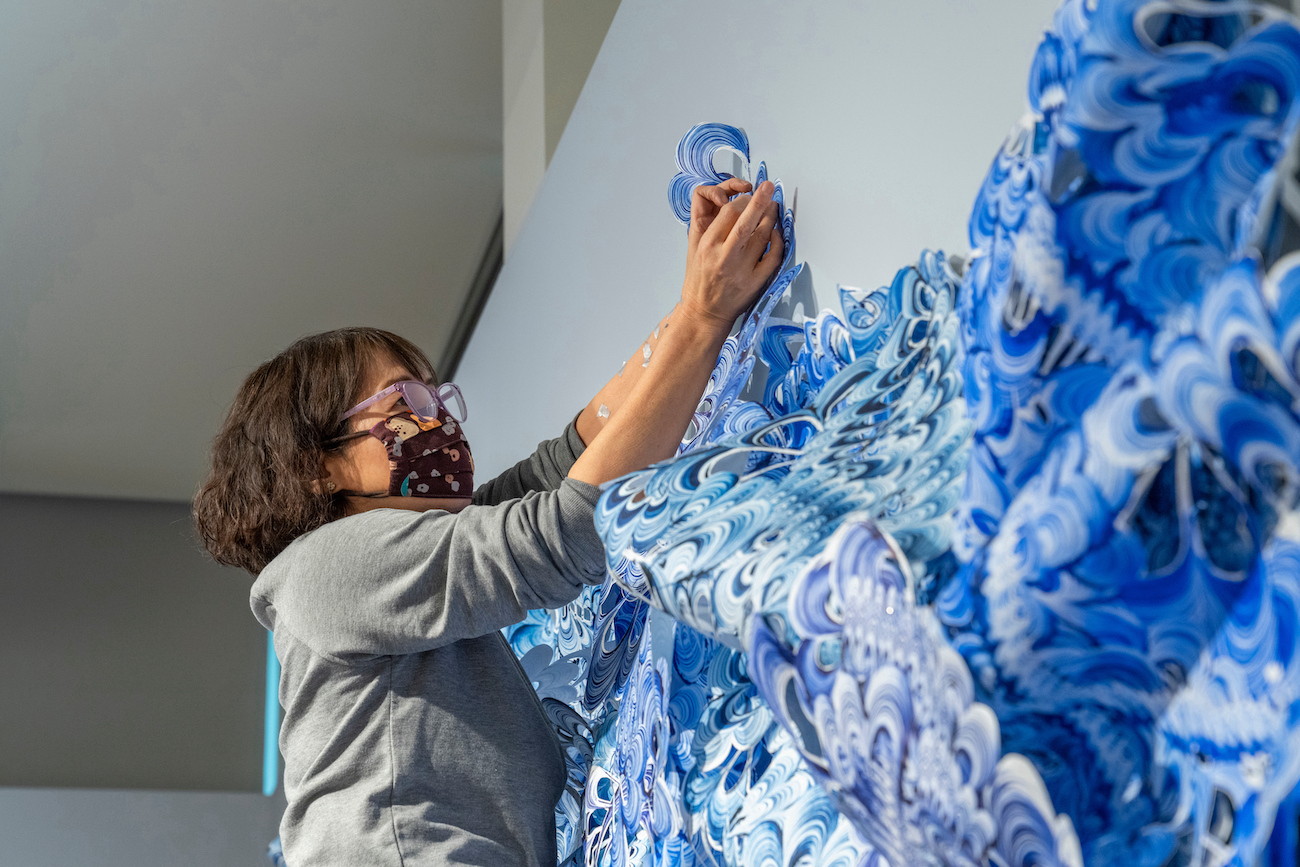
Taiko is a Denver-based artist originally from Nagano, Japan. She first trained and worked as a nurse in Japan and the UK before moving to the United States. In 2011, she took her first printmaking class at the Art Students League of Denver, which marked the beginning of her artistic path. Primarily grounded in printmaking, her practice has expanded to three-dimensional forms.
Taiko has exhibited widely in Colorado, including a solo show at the Boulder Museum of Contemporary Art, the Denver Botanic Gardens and Littleton Museum. Nationally, her work has appeared in group exhibitions and print fairs across the U.S. In 2023, her installation "Blue Surge", created on site from 150 monotype prints on Tyvek, was shown in the exhibition Hokusai: Inspiration and Influence at the Museum of Fine Arts, Boston.
She has held residencies at RedLine Contemporary Art Center (2020–2022) and Anderson Ranch Arts Center (2024). Her work has been featured in Hyperallergic (reviewed by Kealey Boyd), Printmaking Today (authorized Journal of the Royal Society of Painter-Printmakers) and in "A Tale of Two Balconies (Smithsonian Institution & Giles Ltd., 2024)".
